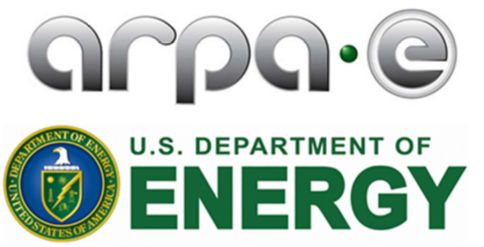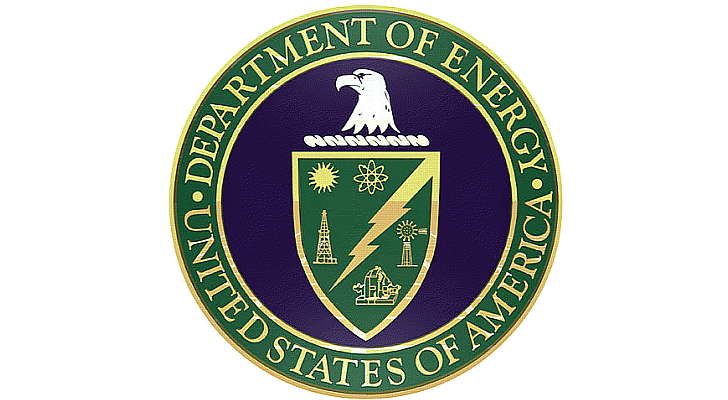Part 2 of 3 Parts (Please read Part 1 first)
Project 1
HolosGen, LLC received $2,278,200 for their work on a Transportable Modular Reactor by Balance of Plant Elimination.
The purpose of this project is the development of a gas cooled nuclear reactor which is transportable. The reactor would be what is called “load following” meaning that the output of the reactor can be changed to match the demands of the grid. This addressed one of the chief complaints about the current generation of nuclear reactors. They were designed and built to produce a certain amount of power constantly. They can be modified to allow load following but it is expensive to do.
These new reactors will be simpler to construct and can be packaged in standard shipping containers which will make them highly transportable and cheaper that current power reactors. The researchers are going to demonstrate the feasibility of this approach by using multi-physics modeling and simulation tools. They will validate the computer models by constructing and testing a non-nuclear prototype.
Project 2
North Carolina State University in Raleigh, NC will receive $3,386,834 for the Development of a Nearly Autonomous Management and Control System for Advanced Reactors
The purpose of this project is the development of a highly autonomous and automated management and control system for advanced nuclear reactors. The new system they are developing will use artificial intelligence and machine learning to continuously monitor data which can be used to predict future plant status. The system will be able to provide suggestions to plant operators with respect to control of the reactor. The hope is that this system will be able to reduce the size of operational staff needed to manage the plant through new instrumentation, better operator training and “smart” procedures. This will also reduce the cost of managing and maintaining nuclear power plants.
Project 3
State University of New York at Buffalo in Amherst, NY will receive $1,443,635 for Reducing Overnight Capital Cost of Advanced Reactors Using Equipment-based Seismic Protective Technologies.
The purpose of this project is to lower the complexity and cost of nuclear power plants by integrating seismic protection systems into the development of advanced reactor buildings and their supporting structures. Every nuclear power plant has to incorporate protections against earthquakes. In the current generation of nuclear power plants, these seismic protections are made of large components which are usually custom made for each new plant. The researchers are working to develop standardized equipment which can be optimized for individual plants and make their construction simpler and cheaper.
Project 4
Terrestrial Energy USA, Inc. in New York, NY will receive $3,150,000 for their work on Magnetically Suspended Canned Rotor Pumps for the Integral Molten Salt Reactor.
The purpose of this project is to develop a novel magnetically suspended circulation pump for molten salt reactors. This will result in the improvement of plant performance, increased pump lifetime, and the reduction of costs. Today, cantilever type pumps are used in the harsh environment of molten salt reactors. The new pumps that are being designed by the researchers will be self-contained. They do not require the vulnerable mechanical seals that are a problem for current pumps. The new pumps will be strong enough to survive the reactor core’s seven-year operating lifetimes. The researchers will construct and test prototypes.
Please read Part 2
Blog
-

Nuclear Reactors 570 – The U.S. Department Of Energy Is Funding New Projects Under The ARPA – E – Part 2 of 3 Parts
-

Geiger Readings for Jun 04, 2018
Ambient office = 93 nanosieverts per hour
Ambient outside = 52 nanosieverts per hour
Soil exposed to rain water = 52 nanosieverts per hour
Asparagus from Central Market = 107 nanosieverts per hour
Tap water = 54 nanosieverts per hour
Filter water = 45 nanosieverts per hour
-

Geiger Readings for Jun 03, 2018
Ambient office = 124 nanosieverts per hour
Ambient outside = 59 nanosieverts per hour
Soil exposed to rain water = 81 nanosieverts per hour
Redleaf lettuce from Central Market = 131 nanosieverts per hour
Tap water = 82 nanosieverts per hour
Filter water = 52 nanosieverts per hour
-

Geiger Readings for Jun 02, 2018
Ambient office = 94 nanosieverts per hour
Ambient outside = 104 nanosieverts per hour
Soil exposed to rain water = 121 nanosieverts per hour
Romaine lettuce from Central Market = 60 nanosieverts per hour
Tap water = 89 nanosieverts per hour
Filter water = 84 nanosieverts per hour
Dover sole – Caught in USA = 100 nanosieverts per hour
-

Nuclear Reactors 569 – The U.S. Department Of Energy Is Funding New Projects Under The ARPA – E – Part 1 of 3 Parts
Part 1 of 3 Parts
The U.S. Department of Energy just announced that it was going to spend up to twenty-four million dollars to fund ten projects as part of a new program under their Advanced Research Projects Agency-Energy (ARPA-E) division. The program is called Modeling-Enhanced Innovations Trailblazing Nuclear Energy Reinvigoration (MEITNER). The purpose of the new projects is to develop innovative technologies that can be used in the design of advanced nuclear reactors that are safer and cheaper than the current generation of power reactors. The DoE says that nuclear energy is a “… reliable source of power that complements the country’s diverse portfolio of energy generation sources.”
The U.S. Energy Secretary, Rick Perry, said, “Nuclear energy is an essential component of the U.S. energy mix, and by teaming up with the private sector to reduce costs and improve safety, we are keeping America ahead of the curve in advanced reactor design and technology. These next-generation ARPA E technologies help us maintain our competitive, technological edge globally, while improving the resilience of the grid and helping provide reliable, baseload electricity to each and every American.”
In the U.S., nuclear power supplies about twenty percent of the electricity. All of the current U.S. nuclear power reactors are conventional light water reactors. This technology was first developed in the 1950s and has been steadily evolving since then. The future of nuclear power in the U.S. is uncertain. High costs and a rapidly changing national power grid which includes renewable power sources such as wind and solar have presented new challenges to existing and proposed nuclear power plants.
If nuclear energy is to continue to contribute substantially to the U.S. power equation in the future, the next generation of nuclear power reactors will have significantly lower capital costs for new nuclear power plants and provide what is called “walkaway” safe and secure operation which means that the staff of a power plant could “walk away” from the nuclear plant control room and the nuclear power reactors would autonomously and safely shut themselves down without human involvement.
It is hoped that the MEITNER projects will be able to make use of new designs, new manufacturing processes, and new technologies that will lower expenses and increase the ability of nuclear power to compete in today’s energy market. These enabling technologies will establish the basis for a modern domestic supply chain to support the continued use and growth of nuclear technology.
The MEITNER projects that have been funded are expected to support the creation of advanced reactor designs that will permit lower construction costs and autonomous operating while increasing the safety of the new nuclear power reactors.
The U.S. DoE’s Office of Nuclear energy worked closely with the ARPA-E to develop this new funding opportunity. MEITNER teams will be permitted to access DoE modeling and simulation software and simulation resources. Project teams will coordinate with a DoE-supported resource team of experts from the DoE and DoE’s National Laboratories. Here is the list of new projects that are being funded under the MEITNER program.
Please read Part 2. -

Geiger Readings for Jun 01, 2018
Ambient office = 81 nanosieverts per hour
Ambient outside = 118 nanosieverts per hour
Soil exposed to rain water = 106 nanosieverts per hour
Vine ripened tomato from Central Market = 142 nanosieverts per hour
Tap water = 110 nanosieverts per hour
Filter water = 93 nanosieverts per hour
